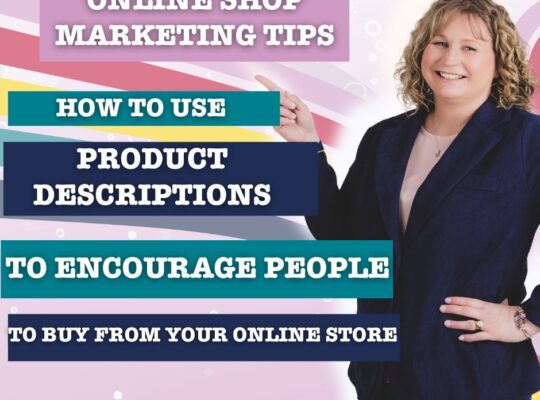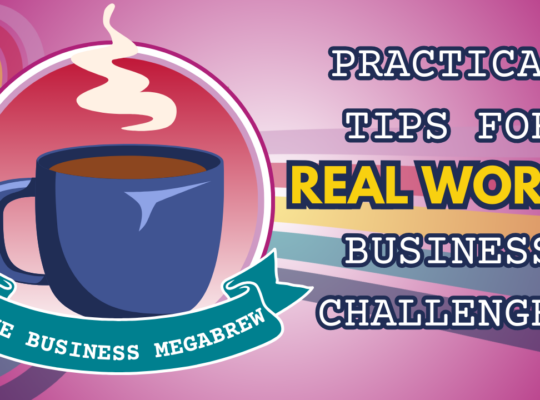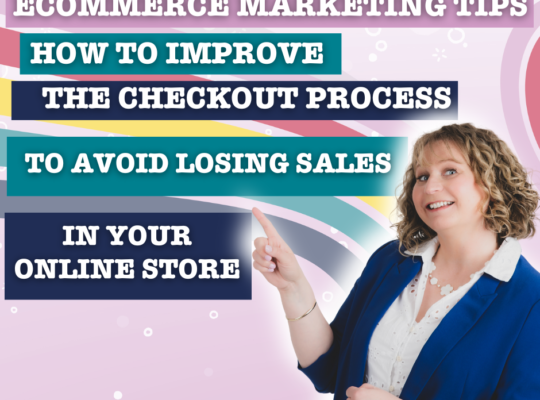As a shop owner, whether it’s online or on the high street, you probably find that your marketing comes quite far down your list of things to do. And when it comes to a marketing strategies for retail stores, there’s a lack of direction in what you’re doing. You might even get easily distracted.
Having a marketing strategy for your shop stops you from doing things sporadically. It is an important plan to make sure you’re reaching the right people, who are likely to buy from you. After all, you need to get people through the door (or to click on your website) to sell your products.
So here are seven marketing strategies for retail stores to help you along.
Get to know your audience

You probably know who some of your customers are, but what makes them tick? Why do they buy from you? What stops them from making a purchase? Understanding as much as you can about your target customers will help you target more people just like them.
For example, imagine you’re a boutique store. You collect customer feedback through quick in-store surveys and online polls, then use the data to stock products that frequently receive high interest. You can also use what they tell you in your marketing messages – there’ll be some questions you can answer and points you can make which will encourage others to visit.
Enhance your website
Your website is your online shop front. There is no doubt about it. But how do people find your website? What happens when a potential customer lands on it? What’s the journey? How easy is it for them to find what they’re looking for and click to purchase? Prioritising this is one of the key marketing strategies for retail stores.
Using popular keywords for search engine optimisation (SEO) is key to helping customers to find you. And investing in the journey on your website so that there is an easy flow can improve sales too.
If you’d like help with your online customer journey, get in touch as I can help you with it.
Here’s an example of how a book shop could improve the number of visitors to its website. It optimises its content on the website by including popular search terms in their product descriptions. This can lead to an increase of visitors and indeed sales.
Social media and retail
You can’t be in business and not be on social media these days. But it’s how you use it that is important. Make sure you use the platform your audience is likely to be using (that’s one of the questions you could ask in your surveys!) And then tailor the content to that platform. For example on Instagram you’ll want to be using lots of images and reels, Tik Toks will require lots of video, whilst Facebook will be the place where you might want to build a community.
Imagine you’re a clothing retailer. You can use Instagram Stories to showcase new arrivals in real-time and run exclusive flash sales or offers for your followers.
You can also use paid advertising on social media. I’m not an expert on that, but the one thing I have learnt is don’t fall into the trap of ‘boosting’ a post. This is unlikely to get you the results you’re after.
Create a great experience in store

When someone steps into your shop, what’s their experience? Does it feel welcoming, inviting, enticing? Or is it a bit of a shambles and all over the shop? Create something that’s going to make people want to revisit. Even tell their friends about it.
To raise awareness and drive footfall in your store, you could arrange special events or a promotion. A great example of this is a homeware store which holds monthly DIY workshops. This not only brings customers into the store, it allows them to get to know the store owner and their knowledge, whilst also increasing purchases as participants buy supplies to use during the workshop.
The power of email marketing

E-mail marketing gives some people the ‘ick’. They think it’s spammy. But when it’s done well, and is targeted at people who genuinely want to hear from you, then it is one of the most effective marketing tools.
But how can you get those key people on your email marketing list? Using a lead magnet is a great way. This could be a discount code, a special instore offer, a guide or a download…there are lots of possibilities.
And once people are on your list, you can send them regular campaigns and updates. Remember, don’t send emails for the sake of it. Make sure the content is useful and helpful and is going to want people to take some action.
You could be a store which sends monthly newsletters featuring tips, customer stories, and coupons for products relevant to the content. This keeps engagement high and encourages repeat visits.
Do you want to know how visible you’re marketing is? Take this 2-minute free quiz to find out.
Partner with other businesses
Collaboration is ace! And when it’s with other businesses in your area or sector, the benefits can be rewarding. You’re not only helping each other out, but are able to tap into other businesses audiences.
Here’s an example: a coffee shop and a book store partner to create “Read and Refresh” bundles, offering discounts when customers purchase from both on the same day, boosting foot traffic and sales for both.
Measure, monitor and refine
Whatever marketing you choose to do, a key part of marketing strategies for retail stores is to keep an eye on what you’re doing and how it is working. If you set yourself a goal at the beginning, is your marketing helping you to achieve it? If it is, great! Keep going. If it isn’t, change things, try something else.
Say, for example you run some promotions. By tracking which promotions lead to the highest number of redeemed in-store coupons, you can adjust your marketing strategy to focus more on those types of promotions.
Regularly keeping an eye on the results means that you’ll know if what you’re doing is worthwhile and not a waste of time, energy and importantly, budget.
Some key marketing strategies for retail stores
These are just top level ideas for some of the marketing strategies you could use in your shop or online store. If you’d like more tips like this, then subscribe here – I promise only to send useful information direct to your inbox.
And of course if you have any questions, please get in touch.







